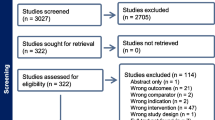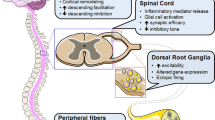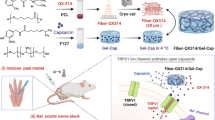Abstract
The mechanisms underlying postoperative pain differ from the inflammatory or neuropathic pain. Previous studies have demonstrated that intrathecal α-amino-3-hydroxy-5-methy-4-isoxazole propionate (AMPA) -kainate (KA) receptor antagonist inhibits the guarding pain behavior and mechanical hyperalgesia, indicating a critical role of spinal KA receptors in postoperative pain hypersensitivity. However, how the functional regulations of spinal KA receptor subunits are involved in the postoperative pain hypersensitivity remains elusive. Therefore, in the current study, we investigated the synaptic delivery of spinal KA receptor subunits and the interaction between KA receptor subunits and glutamate receptor-interacting protein (GRIP) during the postoperative pain. Our data indicated that plantar incision induced the synaptic delivery of GluK2, but not GluK1 or GluK3 in ipsilateral spinal cord dorsal horns. The co-immunoprecipitation showed an increased GluK2 –GRIP interaction in ipsilateral dorsal horn neurons at 6 h post-incision. Interestingly, Intrathecal pretreatment of GRIP siRNA increased the paw withdrawal thresholds to mechanical stimuli and decreased the cumulative pain scores in the paws ipsilateral to the incision at 6 h post-incision. Additionally, Intrathecal pretreatment of GRIP siRNA reduced the synaptic abundance of GluK2 in ipsilateral spinal dorsal horn at 6 h after plantar incision. In general, our data have demonstrated that the GluK2- GRIP interaction-mediated synaptic abundance of GluK2 in dorsal horn neurons plays an important role in the postoperative pain hypersensitivity. Disrupting the GluK2- GRIP interaction may provide a new approach for relieving postoperative pain.





Similar content being viewed by others
Data Availability
All data generated or analyzed during this study are included in this published article.
References
Eisenach JC, Brennan TJ (2018) Pain after surgery. Pain 159:1010–1011. https://doi.org/10.1097/j.pain.0000000000001223
Kehlet H (2018) Postoperative pain, analgesia, and recovery-bedfellows that cannot be ignored. Pain 159(1):S11–S16. https://doi.org/10.1097/j.pain.0000000000001243
Brennan TJ (2011) Pathophysiology of postoperative pain. Pain 152:S33–S40. https://doi.org/10.1016/j.pain.2010.11.005
Xu J, Brennan TJ (2011) The pathophysiology of acute pain: animal models. Curr Opin Anaesthesiol 24:508–514. https://doi.org/10.1097/ACO.0b013e32834a50d8
Zahn PK, Brennan TJ (1998) Lack of effect of intrathecally administered N-methyl-D-aspartate receptor antagonists in a rat model for postoperative pain. Anesthesiology 88:143–156. https://doi.org/10.1097/00000542-199801000-00022
Zahn PK, Pogatzki-Zahn EM, Brennan TJ (2005) Spinal administration of MK-801 and NBQX demonstrates NMDA-independent dorsal horn sensitization in incisional pain. Pain 114:499–510. https://doi.org/10.1016/j.pain.2005.01.018
Lee HJ, Pogatzki-Zahn EM, Brennan TJ (2006) The effect of the AMPA/kainate receptor antagonist LY293558 in a rat model of postoperative pain. J Pain 7:768–777. https://doi.org/10.1016/j.jpain.2006.03.010
Twomey EC, Yelshanskaya MV, Grassucci RA, Frank J, Sobolevsky AI (2017) Channel opening and gating mechanism in AMPA-subtype glutamate receptors. Nature 549:60–65. https://doi.org/10.1038/nature23479
Ozawa S, Kamiya H, Tsuzuki K (1998) Glutamate receptors in the mammalian central nervous system. Prog Neurobiol 54:581–618. https://doi.org/10.1016/s0301-0082(97)00085-3
Bhangoo SK, Swanson GT (2013) Kainate receptor signaling in pain pathways. Mol Pharmacol 83:307–315. https://doi.org/10.1124/mol.112.081398
Contractor A, Mulle C, Swanson GT (2011) Kainate receptors coming of age: milestones of two decades of research. Trends Neurosci 34:154–163. https://doi.org/10.1016/j.tins.2010.12.002
Lerma J, Marques JM (2013) Kainate receptors in health and disease. Neuron 80:292–311. https://doi.org/10.1016/j.neuron.2013.09.045
Jane DE, Lodge D, Collingridge GL (2009) Kainate receptors: pharmacology, function and therapeutic potential. Neuropharmacology 56:90–113. https://doi.org/10.1016/j.neuropharm.2008.08.023
Pahl S, Tapken D, Haering SC, Hollmann M (2014) Trafficking of kainate receptors. Membranes 4:565–595. https://doi.org/10.3390/membranes4030565
Castillo PE, Malenka RC, Nicoll RA (1997) Kainate receptors mediate a slow postsynaptic current in hippocampal CA3 neurons. Nature 388:182–186. https://doi.org/10.1038/40645
Rodriguez-Moreno A, Sihra TS (2007) Kainate receptors with a metabotropic modus operandi. Trends Neurosci 30:630–637. https://doi.org/10.1016/j.tins.2007.10.001
Pinheiro PS, Mulle C (2008) Presynaptic glutamate receptors: physiological functions and mechanisms of action. Nat Rev Neurosci 9:423–436. https://doi.org/10.1038/nrn2379
Sheng N, Shi YS, Nicoll RA (2017) Amino-terminal domains of kainate receptors determine the differential dependence on Neto auxiliary subunits for trafficking. Proc Natl Acad Sci USA 114:1159–1164. https://doi.org/10.1073/pnas.1619253114
Hirbec H, Francis JC, Lauri SE, Braithwaite SP, Coussen F, Mulle C, Dev KK, Coutinho V, Meyer G, Isaac JT, Collingridge GL, Henley JM (2003) Rapid and differential regulation of AMPA and kainate receptors at hippocampal mossy fibre synapses by PICK1 and GRIP. Neuron 37:625–638. https://doi.org/10.1016/s0896-6273(02)01191-1
Brennan TJ, Vandermeulen EP, Gebhart GF (1996) Characterization of a rat model of incisional pain. Pain 64:493–501. https://doi.org/10.1016/0304-3959(95)01441-1
Dixon WJ (1980) Efficient analysis of experimental observations. Annu Rev Pharmacol Toxicol 20:441–462. https://doi.org/10.1146/annurev.pa.20.040180.002301
Chaplan SR, Bach FW, Pogrel JW, Chung JM, Yaksh TL (1994) Quantitative assessment of tactile allodynia in the rat paw. J Neurosci Methods 53:55–63. https://doi.org/10.1016/0165-0270(94)90144-9
Xu J, Brennan TJ (2010) Guarding pain and spontaneous activity of nociceptors after skin versus skin plus deep tissue incision. Anesthesiology 112:153–164. https://doi.org/10.1097/ALN.0b013e3181c2952e
Wang Y, Wu J, Guo R, Zhao Y, Wang Y, Zhang M, Chen Z, Wu A, Yue Y (2013) Surgical incision induces phosphorylation of AMPA receptor GluR1 subunits at Serine-831 sites and GluR1 trafficking in spinal cord dorsal horn via a protein kinase Cgamma-dependent mechanism. Neuroscience 240:361–370. https://doi.org/10.1016/j.neuroscience.2013.02.051
Dunah AW, Standaert DG (2001) Dopamine D1 receptor-dependent trafficking of striatal NMDA glutamate receptors to the postsynaptic membrane. J Neurosci 21:5546–5558
Liaw WJ, Zhu XG, Yaster M, Johns RA, Gauda EB, Tao YX (2008) Distinct expression of synaptic NR2A and NR2B in the central nervous system and impaired morphine tolerance and physical dependence in mice deficient in postsynaptic density-93 protein. Mol Pain 4:45. https://doi.org/10.1186/1744-8069-4-45
Guo R, Zhao Y, Zhang M, Wang Y, Shi R, Liu Y, Xu J, Wu A, Yue Y, Wu J, Guan Y, Wang Y (2014) Down-regulation of Stargazin inhibits the enhanced surface delivery of alpha-amino-3-hydroxy-5-methyl-4-isoxazole propionate receptor GluR1 subunit in rat dorsal horn and ameliorates postoperative pain. Anesthesiology 121:609–619. https://doi.org/10.1097/ALN.0000000000000291
Casimiro TM, Sossa KG, Uzunova G, Beattie JB, Marsden KC, Carroll RC (2011) mGluR and NMDAR activation internalize distinct populations of AMPARs. Mol Cell Neurosci 48:161–170. https://doi.org/10.1016/j.mcn.2011.07.007
Guo R, Li H, Li X, Xue Z, Sun Y, Ma D, Guan Y, Li J, Tian M, Wang Y (2018) Downregulation of neuroligin1 ameliorates postoperative pain through inhibiting neuroligin1/postsynaptic density 95-mediated synaptic targeting of alpha-amino-3-hydroxy-5-methyl-4-isoxazole propionate receptor GluA1 subunits in rat dorsal horns. Mol Pain 14:2070396775. https://doi.org/10.1177/1744806918766745
Guo R, Li H, Li X, Sun Y, Miao H, Ma D, Hong F, Zhang Y, Guan Y, Li J, Tian M, Wang Y (2018) Increased neuroligin 2 levels in the postsynaptic membrane in spinal dorsal horn may contribute to postoperative pain. Neuroscience 382:14–22. https://doi.org/10.1016/j.neuroscience.2018.04.028
Guo R, Hao J, Ma D, Li H, Liao K, Wang Y (2020) Persistent proliferation of keratinocytes and prolonged expression of pronociceptive inflammatory mediators might be associated with the postoperative pain in KK mice. Mol Pain 16:2068236236. https://doi.org/10.1177/1744806920927284
Guo R, Sun Y, Li H, Ma D, Wang Y (2020) Upregulation of spinal glucose-dependent insulinotropic polypeptide receptor induces membrane translocation of PKCgamma and synaptic target of AMPA receptor GluR1 subunits in dorsal horns in a rat model of incisional pain. Neurochem Int 134:104651. https://doi.org/10.1016/j.neuint.2019.104651
Meador-Woodruff JH, Davis KL, Haroutunian V (2001) Abnormal kainate receptor expression in prefrontal cortex in schizophrenia. Neuropsychopharmacol 24:545–552. https://doi.org/10.1016/S0893-133X(00)00189-5
Schiffer HH, Heinemann SF (2007) Association of the human kainate receptor GluR7 gene (GRIK3) with recurrent major depressive disorder. Am J Med Genet B 144B:20–26. https://doi.org/10.1002/ajmg.b.30374
Jamain S, Betancur C, Quach H, Philippe A, Fellous M, Giros B, Gillberg C, Leboyer M, Bourgeron T (2002) Linkage and association of the glutamate receptor 6 gene with autism. Mol Psychiatry 7:302–310. https://doi.org/10.1038/sj.mp.4000979
Ball SM, Atlason PT, Shittu-Balogun OO, Molnar E (2010) Assembly and intracellular distribution of kainate receptors is determined by RNA editing and subunit composition. J Neurochem 114:1805–1818. https://doi.org/10.1111/j.1471-4159.2010.06895.x
Guo W, Zou S, Tal M, Ren K (2002) Activation of spinal kainate receptors after inflammation: behavioral hyperalgesia and subunit gene expression. Eur J Pharmacol 452:309–318. https://doi.org/10.1016/s0014-2999(02)02333-6
Tang M, Ivakine E, Mahadevan V, Salter MW, McInnes RR (2012) Neto2 interacts with the scaffolding protein GRIP and regulates synaptic abundance of kainate receptors. PLoS ONE 7:e51433. https://doi.org/10.1371/journal.pone.0051433
Acknowledgements
This work was supported by Grants from the National Natural Science Foundation of China (81771181, 81571065); the Beijing Natural Science Foundation (7202053); Beijing Hospitals Authority Youth Program (QML20180105); and Scientific Research Common Program of Beijing Municipal Commission of Education (KM201910025018).
Funding
This work was supported by Grants from the National Natural Science Foundation of China (81771181, 81571065); the Beijing Natural Science Foundation (7202053); Beijing Hospitals Authority Youth Program (QML20180105); and Scientific Research Common Program of Beijing Municipal Commission of Education (KM201910025018).
Author information
Authors and Affiliations
Contributions
RG: Investigation, writing—original draft, methodology. HL: Data curation, methodology, visualization, investigation. RS: Data curation, visualization, conceptualization, methodology. YL: Conceptualization, data curation, methodology. YW: Writing—review & editing, supervision, conceptualization.
Corresponding author
Ethics declarations
Conflict of interest
The authors declare no conflict of interest.
Ethical Approval
All experiments were reviewed and approved by the Ethical Committee of Beijing Chaoyang Hospital, Capital Medical University (Beijing, China) (Approval No. 2018-381).
Additional information
Publisher's Note
Springer Nature remains neutral with regard to jurisdictional claims in published maps and institutional affiliations.
Rights and permissions
About this article
Cite this article
Guo, R., Li, H., Shi, R. et al. Intrathecal Injection of GRIP-siRNA Reduces Postoperative Synaptic Abundance of Kainate Receptor GluK2 Subunits in Rat Dorsal Horns and Pain Hypersensitivity. Neurochem Res 46, 1771–1780 (2021). https://doi.org/10.1007/s11064-021-03323-z
Received:
Revised:
Accepted:
Published:
Issue Date:
DOI: https://doi.org/10.1007/s11064-021-03323-z




